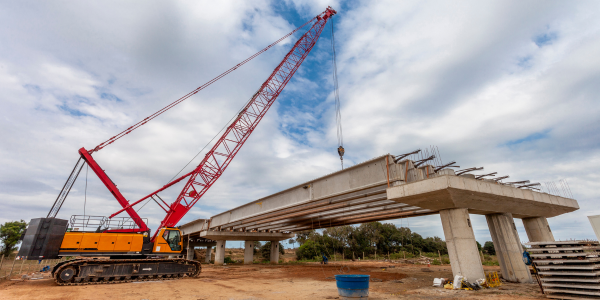
Bridge construction
Bridge construction involves the design, planning, and construction of structures that span physical obstacles such as rivers, valleys, roads, or railways, providing passage for vehicles, pedestrians, or utilities. Bridges are critical infrastructure components, facilitating transportation and connectivity while accommodating various loads and environmental conditions. Construction processes for bridges vary depending on factors such as bridge type, location, materials, and engineering requirements.
Key stages of bridge construction include:
1. Survey and Planning: Engineers conduct surveys to assess site conditions, including topography, geology, hydrology, and environmental considerations. Planning involves selecting the most suitable bridge type, alignment, and structural configuration based on traffic requirements, site constraints, and budget considerations.
2. Design: Bridge design involves structural analysis, load calculations, and the development of detailed engineering drawings and specifications. Engineers consider factors such as traffic volumes, vehicle types, seismic activity, and environmental impacts when designing the bridge structure and foundation systems.
3. Site Preparation: Site preparation involves clearing vegetation, excavating soil, and establishing access points for construction equipment and materials. Temporary facilities, such as construction camps, staging areas, and material storage sites, may be set up near the bridge construction site.
4. Foundation Construction: Foundations provide support and stability for bridge structures, transferring loads from the superstructure to the underlying soil or bedrock. Common foundation types include shallow foundations (such as spread footings and mat foundations) and deep foundations (such as piles and drilled shafts), selected based on soil conditions and structural requirements.
5. Substructure Construction: Substructure elements, including abutments, piers, and pedestals, are constructed to support the bridge superstructure. Substructure construction methods may vary depending on the bridge type and foundation design, utilizing materials such as reinforced concrete, steel, or masonry.
6. Superstructure Erection: The bridge superstructure, including decks, girders, beams, and trusses, is assembled and erected on top of the substructure. Construction methods may involve precast concrete elements, steel fabrication, or cast-in-place concrete construction, depending on project requirements and design specifications.
7. Deck Placement: Once the superstructure is erected, the bridge deck is constructed to provide the roadway surface for vehicles or pedestrians. Deck construction methods include cast-in-place concrete, precast concrete panels, steel grating, or composite materials, depending on durability, aesthetics, and maintenance requirements.
8. Finishing and Safety Features: After the bridge structure is complete, finishing touches such as railing installation, pavement marking, and signage are added to ensure safety and functionality. Bridge components such as expansion joints, bearings, drainage systems, and lighting are installed to enhance performance and longevity.